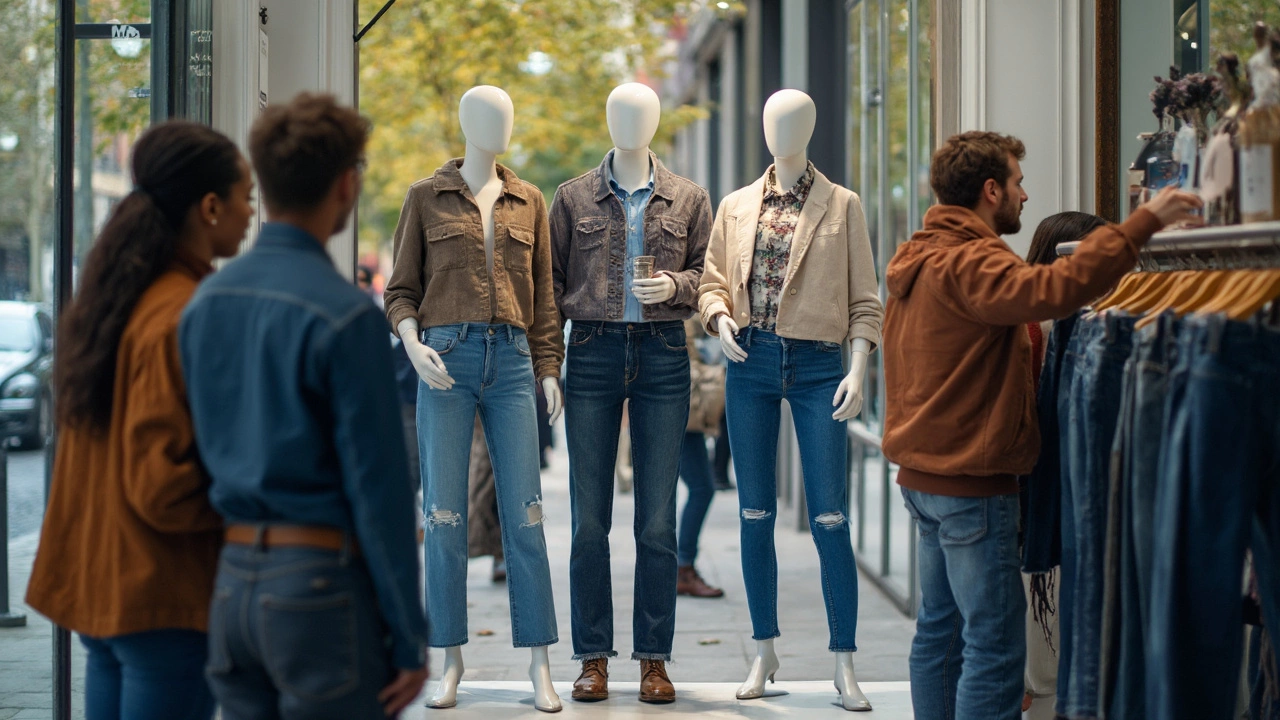Choosing Jeans: Your Easy Guide to the Perfect Pair
Jeans are a wardrobe workhorse, but not all pairs work the same. Picking the right pair can feel like a gamble, especially with endless cuts, washes, and brands. This guide cuts through the noise and shows you exactly what to look for, so you walk out of the store (or click "add to cart") with confidence.
Know Your Body Type
If you know your shape, you already have a head start. Tall folks usually benefit from a higher rise that keeps the legs looking proportionate. Shorter frames often look best in mid‑rise or low‑rise styles with a slight taper to avoid a shortened silhouette. For pear shapes, a boot‑cut or slight flare balances hips, while straight‑leg and skinny cuts work great on athletic builds that want to show off leg lines.
Don’t forget the waist. A well‑fitted waist sits just above your hips without pinching. If you find yourself tugging the waistband, try a stretch denim or size up but keep the leg taper in mind. Many brands now offer “gap‑free” designs that accommodate a slim waist and fuller hips without sagging.
Key Denim Details to Look For
Rise is the first big decision – low, mid, or high. High‑rise gives a polished look and tucks in your belly button, while low‑rise can be casual but may require a longer top to avoid an unwanted exposed midriff. Mid‑rise is the safe middle ground for most everyday outfits.
Next, check the cut. Skinny fits hug the leg from thigh to ankle; slim fits are a little looser and more forgiving; straight cuts run straight down; boot‑cut flares out at the bottom. Pick a cut that matches both your style and comfort level. Trying them on while moving (sitting, squatting) helps you see if the fabric stays in place.
Fabric matters too. Traditional 100% cotton denim is sturdy but can feel stiff at first. A small blend of elastane (1‑3%) adds stretch, making it easier to sit and walk. Look for a weight that fits the season – lighter denim (8‑10 oz) for summer, heavier (12‑14 oz) for cooler months.
Wash and color affect how the jeans age. Dark indigo looks sleek and doesn’t show wear as quickly, while raw or light washes give a relaxed vibe but scrub faster. If you want versatility, a medium wash works with both casual tees and dressier shirts.
Finally, examine the details: stitching, rivets, and pockets. Reinforced stitching on the inseam means durability. Pockets that are too deep can add bulk; a modest pocket size keeps the leg line clean. Small touches like a leather patch or subtle distressing can add personality without overwhelming the look.
Now that you know the basics, try a quick test. Grab a pair, zip it up, and walk a few steps. If you feel restricted or the denim slides down, it’s not the right fit. A good pair should feel snug at the waist, flexible at the hips, and smooth along the leg.
Remember, the perfect jeans are the ones you feel good in. Use these pointers as a checklist, trust how the fabric feels, and don’t be afraid to experiment with different cuts and washes. In no time, you’ll have a go‑to pair that looks great, feels comfy, and lasts season after season.
-
Which Type of Jeans Is Best? Your Guide to Finding the Right Fit
Picking the right jeans can be tough with so many styles out there. This guide compares the most popular types and helps you find the one that works for your body, style, and lifestyle. You'll learn the pros and cons of skinny, straight, relaxed, and bootcut jeans. Discover what to watch for with fit, fabric, and care. Make shopping for jeans way easier, and skip the guesswork.
